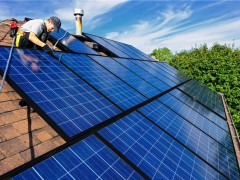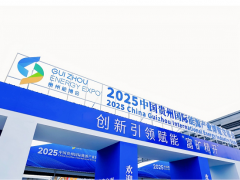據(jù)油價(jià)網(wǎng)7月29日消息稱,美國(guó)銀行印度分部董事總經(jīng)理Gaurav Singhal稱,到2030年,印度可再生能源行業(yè)的股權(quán)投資可能達(dá)到1500億美元左右。
彭博社援引Singhal的一份報(bào)告稱,這些交易肯定會(huì)涉及印度的能源企業(yè)。該報(bào)告提到軟銀集團(tuán)將可再生能源業(yè)務(wù)以35億美元的企業(yè)價(jià)值出售給阿達(dá)尼綠色能源。阿達(dá)尼表示,這筆交易將有助于其提前實(shí)現(xiàn) 25 吉瓦的可再生能源投資組合目標(biāo)。
據(jù)彭博社和美國(guó)銀行的 Singhal 稱,這筆交易的有趣之處在于,阿達(dá)尼綠色能源在最后階段加入了軟銀收購(gòu)SB能源80%股權(quán)的潛在買家集團(tuán)。然而,Singhal 指出,作為一家印度公司,該公司具有優(yōu)勢(shì),而且其自身資產(chǎn)與SB能源的資產(chǎn)非常接近。
然而,潛在投資者希望與當(dāng)?shù)毓竞献魍苿?dòng)印度可再生能源行業(yè)發(fā)展,還有另一個(gè)原因。
彭博社援引Singhal的話說(shuō):“與聯(lián)邦政府打交道的一些問(wèn)題只能由當(dāng)?shù)睾献骰锇閬?lái)處理。外國(guó)投資者不能獨(dú)自承擔(dān)這個(gè)任務(wù)。”
印度的可再生能源發(fā)電能力在過(guò)去十年中有了巨大的增長(zhǎng),從太陽(yáng)能發(fā)電廠的不足20吉瓦到太陽(yáng)能、風(fēng)能、生物質(zhì)和小型水電的超過(guò)96吉瓦。對(duì)于公用事業(yè)規(guī)模的水電站,可再生能源容量為 142 吉瓦,占印度總發(fā)電量的 37%。
與此同時(shí),印度占新興市場(chǎng)電力需求的9%,占預(yù)期需求增長(zhǎng)的20%。
碳追蹤和能源、環(huán)境和水委員會(huì)今年早些時(shí)候的一份報(bào)告稱:“雖然化石燃料的需求可能在短期內(nèi)再次增加,以滿足潛在的電力需求,但印度已經(jīng)證明,在政策優(yōu)先級(jí)和市場(chǎng)設(shè)計(jì)的推動(dòng)下,可以實(shí)現(xiàn)雙重跨越——幾乎所有家庭都將用上電,并推出可再生能源。”
曹海斌 摘譯自 油價(jià)網(wǎng)
原文如下:
India’s Renewable Industry To See $150 Billion Of Investment By 2030
India’s renewable energy industry could see equity investments of some $150 billion by 2030, according to Gaurav Singhal, managing director at Bank of America’s Indian division.
These deals will invariably involve Indian energy players, Singhal said, as quoted by Bloomberg in a report that mentioned SoftBank Group Corp.’s renewables business sale to Adani Green Energy at an enterprise value of $3.5 billion. The deal, Adani said, would help it achieve its renewable energy portfolio target of 25 GW ahead of schedule.
The interesting thing about this deal, according to Bloomberg and BofA’s Singhal, was that Adani Green Energy joined the group of prospective buyers for SoftBank’s 80-percent stake in SB Energy at a late stage. However, it had the advantage of being an Indian company, Singhal noted, and that its own assets were in close proximity to SB Energy assets.
Yet, there is another reason why prospective investors would want to team up with local companies in the push for India’s renewable energy sector.
“Some of the issues of dealing with the federal government can be handled by only the local partners,” Sighal explained, as quoted by Bloomberg. “Foreign investors cannot take that call solo.”
India’s renewable power capacity has grown enormously over the past decade, from less than 20 GW in solar farms to over 96 GW of solar, wind, biomass, and small hydropower. With utility-scale hydropower plants, renewable capacity stands at 142 GW or 37 percent of India’s total power capacity.
At the same time, India accounts for 9 percent of emerging market electricity demand and as much as 20 percent of expected demand growth.
“While fossil fuel demand might again increase in the near-term to meet latent electricity demand, India has demonstrated how a double leapfrog — connecting nearly all households to electricity and its renewable energy rollout — can be driven with policy priorities and market design,” a report by Carbon Tracker and the Council on Energy, Environment and Water said earlier this year.?
免責(zé)聲明:本網(wǎng)轉(zhuǎn)載自其它媒體的文章,目的在于弘揚(yáng)石化精神,傳遞更多石化信息,并不代表本網(wǎng)贊同其觀點(diǎn)和對(duì)其真實(shí)性負(fù)責(zé),在此我們謹(jǐn)向原作者和原媒體致以敬意。如果您認(rèn)為本站文章侵犯了您的版權(quán),請(qǐng)與我們聯(lián)系,我們將第一時(shí)間刪除。







